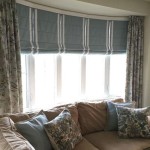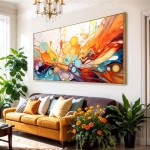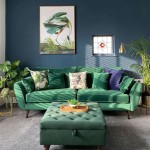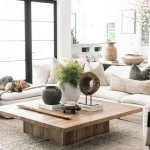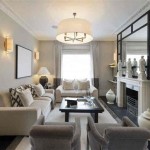Harmonious Hues: Kitchen and Living Room Color Combinations for a Cohesive Home
Creating a visually appealing and harmonious living space requires careful consideration of color palettes, particularly when adjoining spaces like the kitchen and living room are involved. A well-chosen color combination can seamlessly connect these areas, fostering a sense of flow and unity throughout the home. Conversely, clashing colors can create a disjointed and unsettling atmosphere. This article explores various color combinations ideal for kitchens and living rooms, focusing on the principles of color theory and practical application to achieve a cohesive and aesthetically pleasing result.
The selection of colors for these spaces extends beyond mere personal preference. It involves understanding the impact of color on mood, perception of space, and the overall style of the home. Warmer colors, such as reds, oranges, and yellows, tend to evoke feelings of energy and warmth, making them suitable for kitchens, which are often hubs of activity. Cooler colors, like blues, greens, and purples, are generally associated with tranquility and relaxation, making them ideal for creating a calming atmosphere in the living room. However, these are merely general guidelines, and the specific application of these colors depends largely on the desired aesthetic and the existing features of the space.
Many factors influence the final color scheme. These include the amount of natural light the rooms receive, the size and layout of the spaces, the architectural style of the home, and the furniture and décor already present. For instance, a small, dimly lit kitchen might benefit from lighter, brighter colors to maximize light reflection and create a sense of spaciousness. Conversely, a large living room with ample natural light might be able to accommodate darker, more saturated colors without feeling overwhelming.
Understanding Color Theory and its Application
Color theory provides a foundational understanding of how colors interact and combine effectively. The color wheel, a visual representation of colors arranged according to their chromatic relationship, is a valuable tool for selecting harmonious color palettes. Key principles within color theory, such as complementary, analogous, and triadic color schemes, offer frameworks for creating balanced and visually appealing combinations.
Complementary colors are those that sit opposite each other on the color wheel, such as blue and orange, or red and green. When used together, complementary colors create a vibrant and dynamic contrast. However, it's essential to use them judiciously, as excessive use of highly saturated complementary colors can be visually overwhelming. A common approach is to use one color as the dominant hue and the other as an accent color to add visual interest.
Analogous colors are those that sit next to each other on the color wheel, such as blue, blue-green, and green. Analogous color schemes create a harmonious and cohesive look due to their inherent similarity. These palettes are often found in nature and evoke a sense of tranquility and serenity. They are relatively easy to implement and can create a sophisticated and understated aesthetic.
Triadic color schemes involve three colors that are equally spaced on the color wheel, such as red, yellow, and blue. These schemes offer a bolder and more visually stimulating approach than complementary or analogous schemes. When using a triadic color scheme, it's crucial to balance the colors carefully and avoid overwhelming the space. A common strategy is to choose one color as the dominant hue and use the other two as accents.
Beyond these basic schemes, monochromatic color schemes, which utilize different shades and tints of a single color, can create a sophisticated and elegant look. These schemes require careful attention to texture and material to prevent the space from feeling flat or monotonous. Achromatic color schemes, which rely primarily on neutral colors like white, gray, and black, offer a minimalist and timeless aesthetic. These schemes provide a versatile backdrop for incorporating pops of color through accessories and artwork.
Popular Color Combinations for Kitchens and Living Rooms
Several color combinations have proven to be consistently popular and effective in kitchens and living rooms. These combinations often draw upon the principles of color theory and are adaptable to various styles and design preferences. The following are some notable examples:
Gray and White:
This classic combination is timeless and versatile. White provides a clean and bright backdrop, while gray adds depth and sophistication. This combination works well with various accent colors, such as blue, green, or yellow, to add personality and visual interest. In the kitchen, white cabinets with gray countertops can create a modern and elegant look. In the living room, gray walls with white trim and furniture can create a calming and inviting atmosphere.Blue and Beige:
This combination evokes a sense of tranquility and calmness. Blue adds a touch of sophistication, while beige provides a warm and neutral base. This combination is particularly well-suited for coastal or traditional style homes. In the kitchen, blue cabinets with beige countertops can create a charming and inviting space. In the living room, beige walls with blue accents, such as pillows and artwork, can create a relaxing and comfortable atmosphere.Green and Brown:
This natural and earthy combination brings the outdoors in. Green represents growth and renewal, while brown provides a grounding and stable element. This combination is ideal for creating a warm and inviting atmosphere, particularly in rustic or farmhouse style homes. In the kitchen, green cabinets with brown countertops can create a cozy and inviting space. In the living room, brown furniture with green accents, such as plants and wall art, can create a relaxing and organic atmosphere.Yellow and Gray:
This combination offers a balance of energy and sophistication. Yellow adds a cheerful and uplifting touch, while gray provides a contemporary and grounding element. This combination is particularly well-suited for modern or Scandinavian style homes. In the kitchen, yellow accents, such as dishware and accessories, can add a pop of color to a gray and white space. In the living room, gray walls with yellow furniture or artwork can create a vibrant and stylish atmosphere.White and Wood Tones:
This combination is a classic and versatile choice that works well in a variety of styles. The crispness of white is balanced by the warmth and natural texture of wood. This can create a bright and airy space, while still feeling inviting and comfortable. Consider using white walls and cabinets in the kitchen, paired with wood countertops or flooring. In the living room, white walls can be complemented by wood furniture, flooring, or decorative accents.Considerations for Unifying Kitchen and Living Room Spaces
When selecting a color combination for adjoining kitchen and living room spaces, there are several key considerations to ensure a cohesive and harmonious result. It is important to consider the open plan layout; where the kitchen flows directly into the living room, a consistent color palette is crucial to establish a sense of unity. Utilizing a single dominant color throughout both spaces, with variations in shade or intensity, can create a seamless transition. The same principle applies to accent colors, which should be used consistently in both rooms to tie them together visually.
Another important consideration is the flooring. If the kitchen and living room share the same flooring, this already provides a strong visual connection. If the flooring is different, choose colors that complement each other. If the kitchen has a tile floor, find a color that works with the tile and use it as an accent in the living room to create a visual link. Consistent accent colors can tie the spaces together, regardless of the flooring.
The architectural style of the home plays a significant role in determining the appropriate color palette. Traditional homes often benefit from warmer, richer colors, while modern homes tend to favor cooler, more neutral tones. Consider the existing architectural features of the space, such as crown molding, built-in cabinets, and window trim, and choose colors that complement these elements. In addition, it is crucial to remember the importance of lighting. The amount of natural and artificial light in a room can significantly affect how colors appear. It is beneficial to test paint samples in different lighting conditions to ensure that the chosen colors achieve the desired effect.
Ultimately, the best color combination for a kitchen and living room is one that reflects personal style and preferences while creating a harmonious and visually appealing space. By understanding the principles of color theory and considering the various factors that influence color perception, it is possible to create a cohesive and inviting home environment.

20 Free Home Painting Living Room And Images

Choosing A Palette For An Open Floor Plan Colorfully Behr

15 Kitchen And Livingroom Combo Paint Ideas Room Colors House

Choosing A Palette For An Open Floor Plan Colorfully Behr

How To Choose A Palette For An Open Floor Plan

40 Best Kitchen Color Ideas For 2024

37 Kitchen Paint Ideas That Will Revitalize Your Space
:max_bytes(150000):strip_icc()/southslope12961-e55f4d87d3ec444998fd51293856086f.jpg?strip=all)
12 Living Room Color Schemes That Will Make It Your Favorite Space

15 Kitchen Living Room Combo Ideas Perfect For Smaller Spaces Coco Lapine Designcoco Design

Morr Interiors Dorset Park Interior Design Palette Interiordesign Livin Paint Colors For Living Room Grey Color Schemes
See Also

